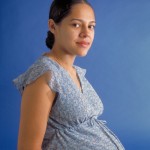While different countries may have different attitudes toward the consumption of alcohol during pregnancy, the American Academy of Pediatrics (AAP) has taken a firm stand against the use of alcohol during pregnancy. In the report entitled “Fetal Alcohol Spectrum Disorders,” published in the November 2015 issue of Pediatrics, the AAP identified prenatal exposure to alcohol as the leading preventable cause of birth defects and intellectual and neurodevelopmental disabilities in children, stating that no amount of alcohol should be considered as safe to drink during any trimester of pregnancy.
Despite efforts to educate women on the negative effects of alcohol during pregnancy, a recent study from the US Centers for Disease Control and Prevention found that one in 10 women in the United States drink alcohol during pregnancy. While most women know that there are risks associated with the use of alcohol during pregnancy, misconceptions regarding its use persist, where some believe that small amounts of alcohol are “okay.”
Prenatal alcohol exposure can lead to a broad range of adverse developmental effects. Fetal alcohol spectrum disorder (FASD) is the term which encompasses the range of adverse effects associated with prenatal alcohol exposure. While fetal alcohol syndrome (FAS) is at one end of the spectrum in terms of severity and has been associated with consumption of greater quantities of alcohol, more recent research suggests that even small amounts of alcohol can negatively affect the developing brain.
In a recent study from Australia, researchers found a consistent abnormalities in craniofacial shape in infants with any level of prenatal alcohol exposure. These changes occurred in the children of women who reported low levels of consumption, defined as ?20 g of absolute alcohol [AA] per occasion and ?70 g of AA per week, as well as women with high consumption, defined as >70 g of AA per week. in the United States, a standard drink contains about 14 grams of alcohol.
These craniofacial abnormalities were concentrated around the midface, nose, lips, and eyes and corresponded to general recession of the midface and superior displacement of the nose, especially the tip of the nose, resulting in a shorter nose with an upturned tip. These changes were observed regardless of whether exposure occurred only in the first trimester or throughout pregnancy. These craniofacial abnormalities were even observed in some women who stopped drinking alcohol early in the course of the first trimester.
Although we do not fully understand the clinical significance of these finding, it is certainly concerning that changes in facial development may occur as a result of exposure to even low amounts of alcohol. Taken in conjunction with other studies documenting the negative effects of alcohol on neurodevelopment, it appears that all women who may become pregnant in the near future should abstain from alcohol.
The Bottom Line: No amount of alcohol consumption is safe during any trimester of pregnancy.
Some Facts to Keep in Mind
- Prenatal alcohol exposure is the most common preventable cause of birth defects.
- Fetal alcohol spectrum disorders are the most commonly identifiable causes of developmental delays and intellectual disabilities.
- Compared to women who do not drink during pregnancy, women with first trimester drinking are 12 times as likely to give birth to a child with FASD. When women consume alcohol during the first and second trimester, the risk of having a child with FASD is 61 times higher. Drinking throughout the pregnancy carries a 65-fold increased risk of FASD.
The Good News: Alcohol-related birth defects and developmental disabilities are completely preventable when pregnant women abstain from the use of alcohol.
Ruta Nonacs, MD PhD
Read More:
Low Prenatal Alcohol Exposure Affects Facial Development (Medscape)
Association Between Prenatal Alcohol Exposure and Craniofacial Shape of Children at 12 Months of Age. Muggli E, Matthews H, Penington A, Claes P, O’Leary C, Forster D, Donath S, Anderson PJ, Lewis S, Nagle C, Craig JM, White SM, Elliott EJ, Halliday J. JAMA Pediatr. 2017 Jun 5.






Leave A Comment